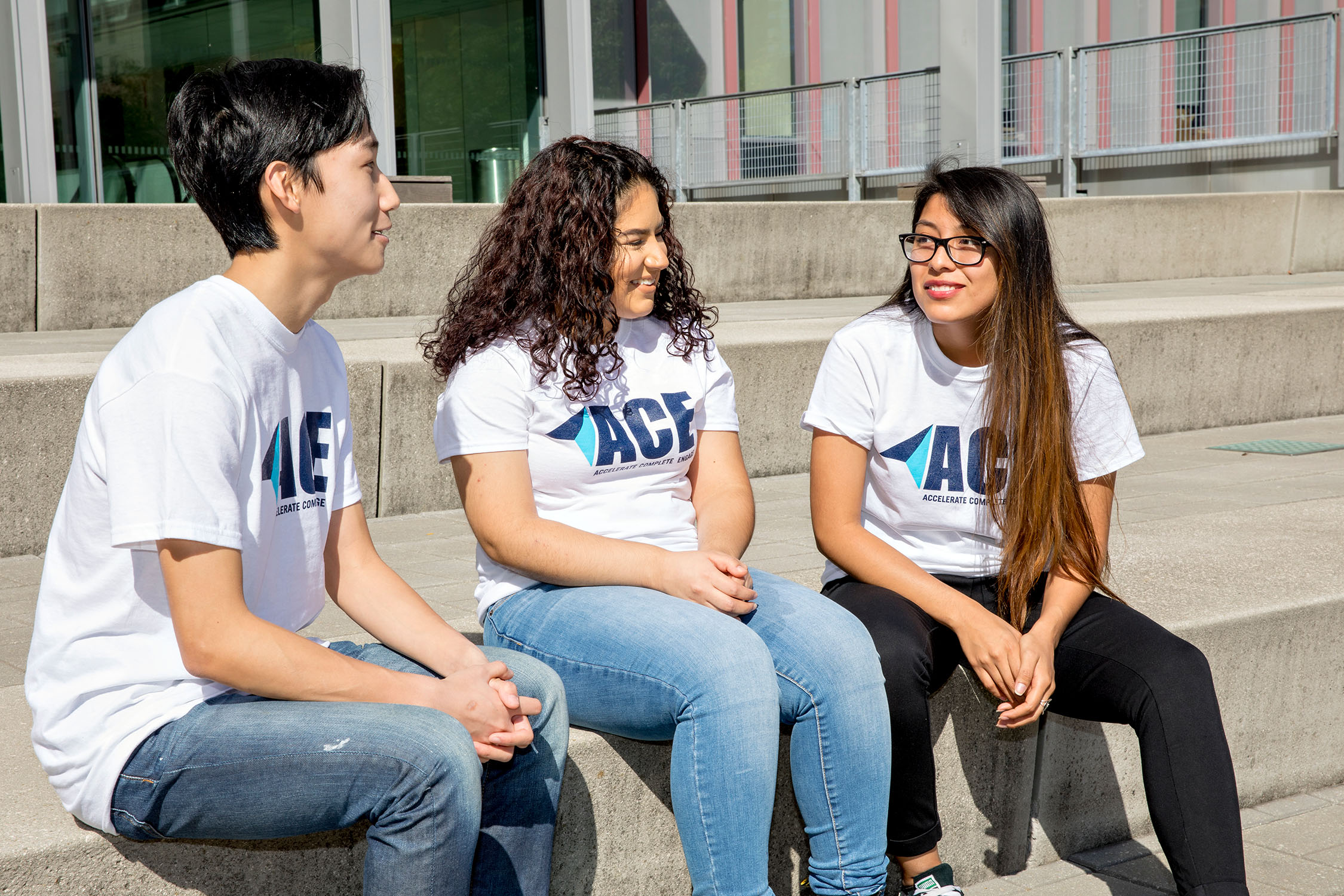
Study Reveals Significantly Higher Graduation Rates for ACE Students
The graduation rate for John Jay Accelerate, Complete, Engage (ACE) Program students (68.8%) was 11.7 percentage points higher than that of a control group (57.1%), according to a six-year, randomized controlled trial. Additionally, the difference was almost twice as large for male students and almost three times as high for Black and Latino students. We sat down with DeLandra Hunter, ACE Director, to better understand the power behind this successful program.
Why and how was this study conducted?
With the support of Arnold Ventures, the six-year study was conducted by a research team from CUNY and Metis Associates, a national consulting firm specializing in research and evaluation. The purpose of the study was to test if our ACE program impacts four- and five-year graduation rates for students who started at John Jay as first-year students. Additionally, the study aimed to understand if there were any effects on degree attainment for subgroups defined by sex, race, ethnicity, and socioeconomic status. Our ACE staff recruited 570 students to participate. Each student was randomly assigned to an ACE group that received program benefits or a control group that received regular John Jay College support. Then, the research team analyzed the data to see if there were any effects on graduation rates for the two primary groups and subgroups.

Were there results of which you were particularly proud?
I’m most proud of the primary finding that ACE students had an estimated graduation rate 11.7 percentage points higher than the control group. This is an impressive finding because two years of the study were conducted during the pandemic. Like all college students, our ACE students had to suddenly shift to remote learning. Thanks to the program’s structured support, this shift did not seem to have a major impact on our graduation rates. This tells us that ACE is effective at leading students across the degree finish line, even during adverse times.
What was the most surprising outcome?
Although I have the pleasure of witnessing what ACE means to students in real-time, the documented impact on our Black and Latino students was notable. This sizable impact for Black and Latino students was unexpected because ACE is still in the early stages of collecting disaggregated data to better inform how we support specific groups of students. Since we are in the early stages of improving our support to close achievement gaps, I’m excited to consider the many ways ACE can further contribute to the graduation success of our students.
Is there anything you want to modify or delve into more deeply because of the findings?
I’m very interested in exploring the findings around the graduation rates of male students. If we can pinpoint exactly what we are doing to support male students, we can scale this support to impact more male students at John Jay and CUNY. There is something about ACE that makes us effective at getting male students to the degree finish line, and I’m motivated to discover what it is.
What can other programs learn from this study and use in their own initiatives?
The final report is an evidence-based blueprint of how ACE provides wrap-around support to remove obstacles to student success and degree completion. The ACE model improves graduation rates by focusing on three major program components: integration and belonging, timely and relevant support, and academic momentum. Most importantly, evaluation and data guide our program management to ensure we support the needs of our students. Our ACE wrap-around model works because we address the holistic needs of students rather than focusing on their isolated individual needs.
What do you want students to take away from this study?
Since CUNY launched ACE at John Jay in 2015, the program has successfully expanded to six other colleges within the CUNY system: College of Staten Island, Lehman College, New York City College of Technology, Queens College, City College of New York, and York. This growth helps to underscore the effectiveness of the resources and structured support provided by ACE. Although not all students at John Jay or our fellow CUNY colleges can join ACE, all current and prospective students can adopt some behaviors of our ACE students to increase their success. For academic momentum, ACE students attempt and earn 15 credits each semester. They follow degree plans outlined by their academic advisors, and they use tutoring centers when needed. For post-graduate preparation, ACE students engage in career development activities with the Center for Career & Professional Development throughout their academic journey—including attending career fairs, creating resumes, and participating in internship opportunities. All John Jay students can gain inspiration from the ACE model to engage in meaningful opportunities that prepare them for post-graduate success.



